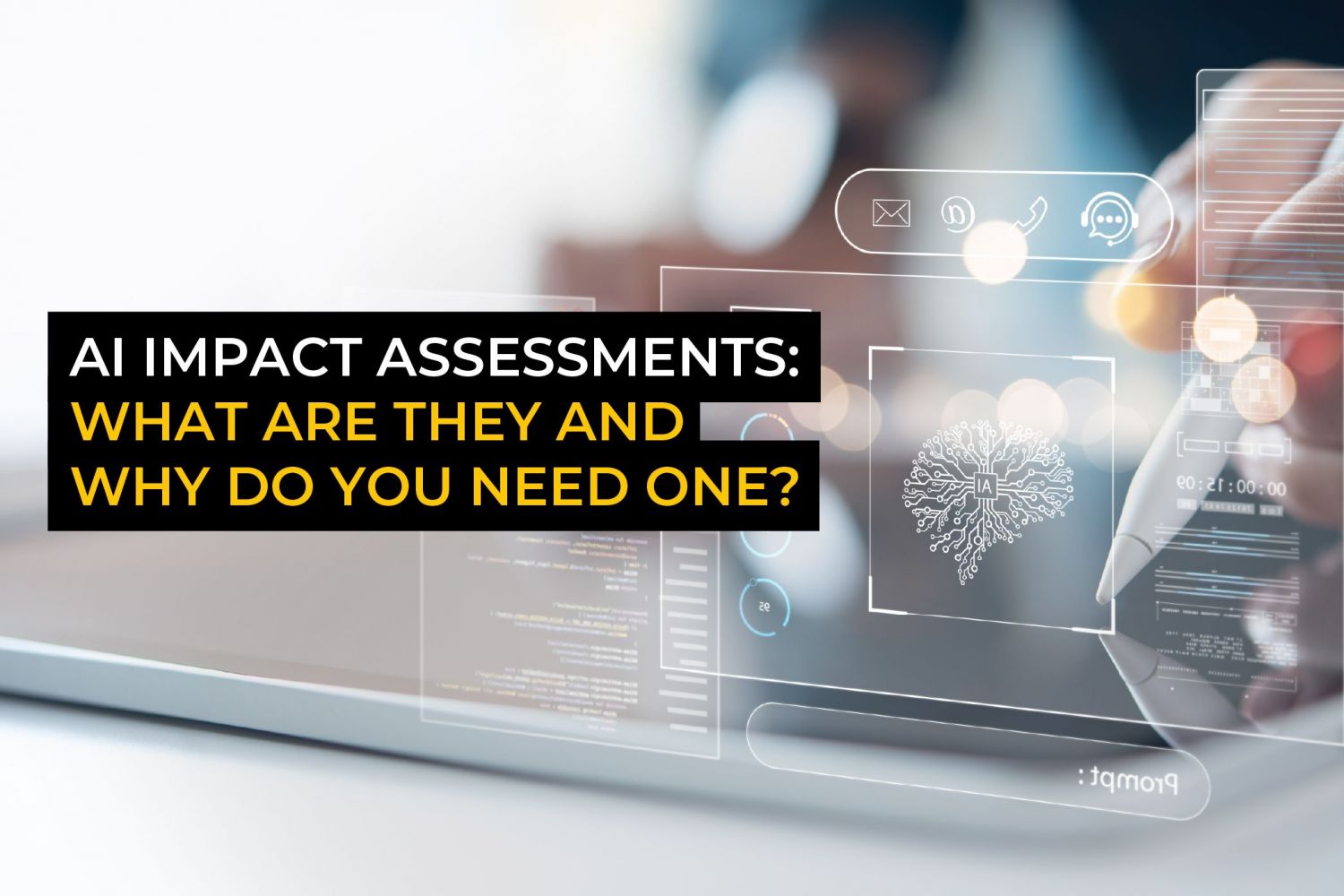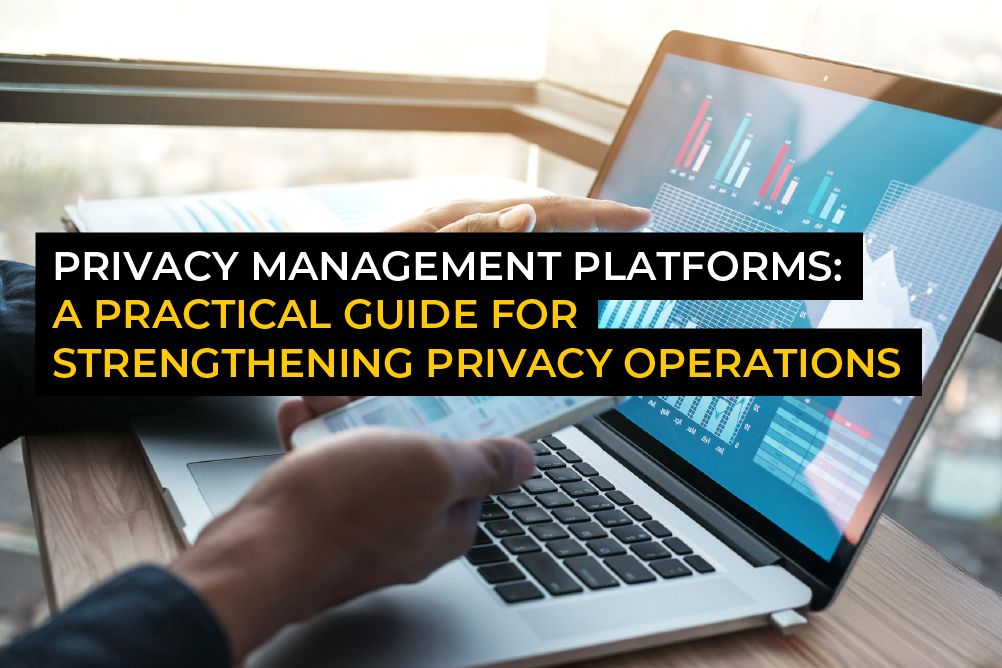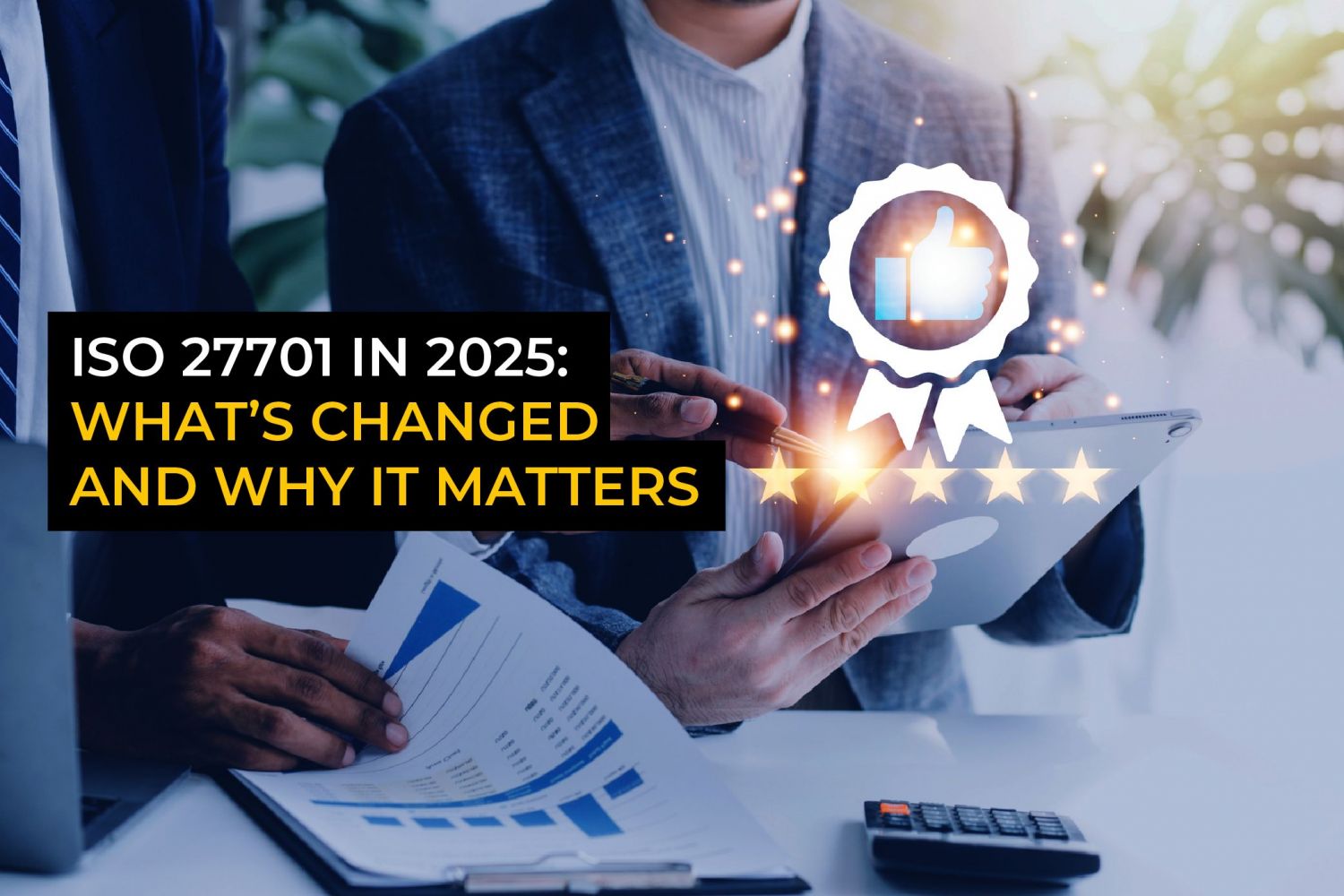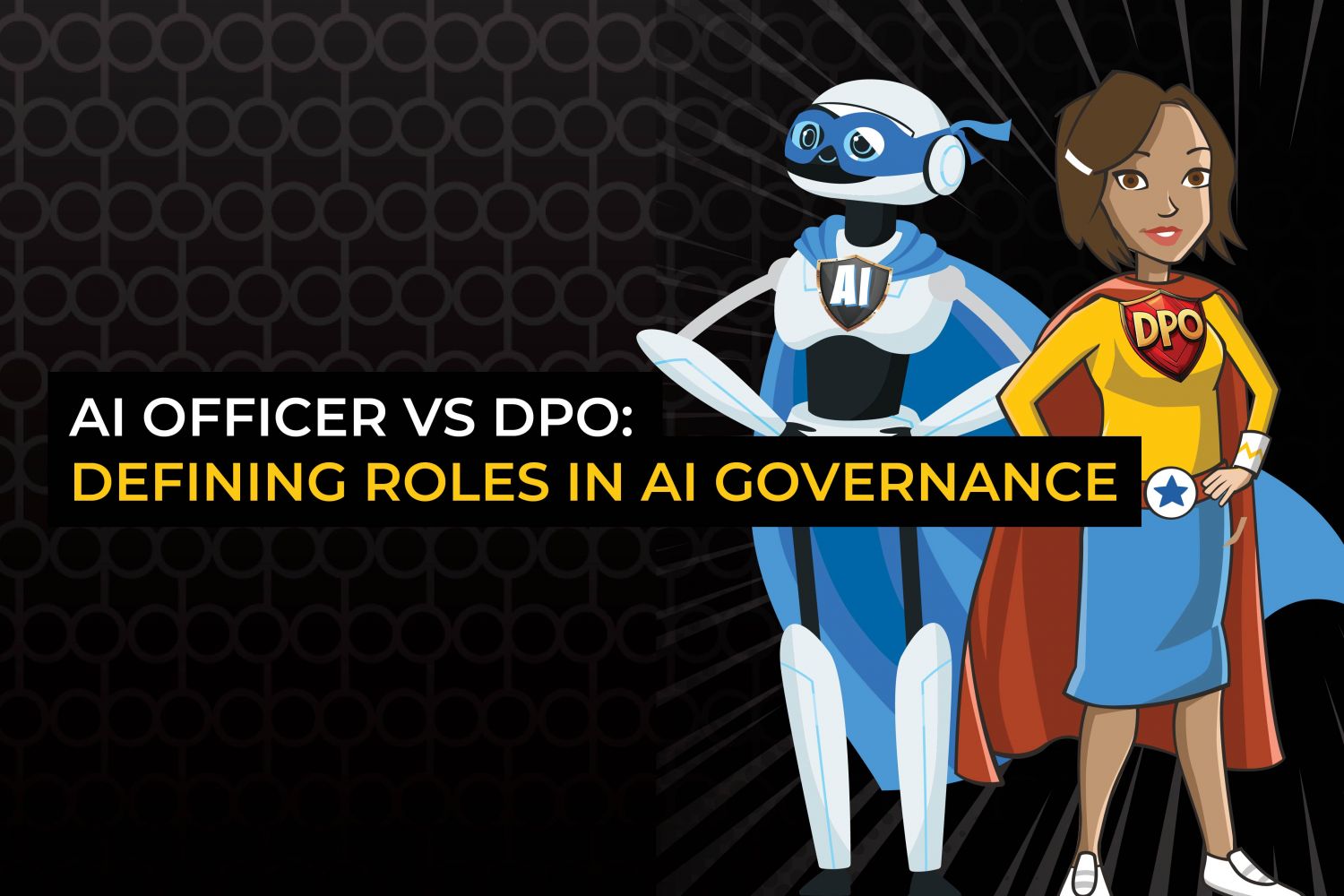- Contact The DPO Centre
- +44 (0)203 797 1289
- hello@dpocentre.com

CRM data retention: Balancing commercial objectives with GDPR compliance
August 4, 2025
AI Impact Assessments: What are they and why do you need one?
September 1, 2025Privacy Management Platforms: A practical guide for strengthening privacy operations

As data protection obligations grow, many organisations are implementing Privacy Management PlatformsA software solution that provides tools and functionalities to streamline data protection and privacy-related tasks, centralising privacy operations across teams. (PMPs) to reduce admin, bring structure to complex privacy operations, and support compliance.
PMPs are designed to centralise and support key privacy tasks, including Data SubjectAn individual who can be identified or is identifiable from data. Access Requests (DSARs), Records of Processing Activities (RoPAs), and Data Protection Impact Assessments (DPIAs). The platforms don’t perform the tasks, but they can help in providing the structure and automationA process or a system that operates automatically. that teams often need to turn fragmented, manual processes into scalable, efficient workflows.
But PMPs aren’t a one-size-fits-all solution. Success depends on choosing the right platform, embedding it effectively, and ensuring ongoing DPO involvement.
In this blog, we bring together expert perspectives to help you make informed decisions about PMP adoption and use. Contributors include Leila Sayssa, Legal Content Manager at Dastra, Claus Klein-Ipsen, Head of Sales and Customer Relations at Wired Relations, and Padraig O’Leary, Co-Founder and CEO of TrustWorks.
- Benefits of privacy management platforms
- Why DPO input is still essential
- Common misconceptions about PMPs
- Choosing the right PMP for your organisation
- Getting PMP implementation-right
Privacy Management Platforms (PMPs) can help reduce reliance on spreadsheets, siloed tools, and manual processes. They are particularly valuable for teams seeking to streamline compliance efforts while improving accountabilityPerhaps the most important GDPR principle, which requires controllers to take responsibility for complying with the GDPR and, document their compliance. and visibility across the organisation.
‘A good PMP is built to evolve alongside the legal landscape. By offering automatic updates, they reduce the burden of tracking legislative changes and ensure the system remains a reliable guide for privacy compliance.’ Leila Sayssa, Dastra
How PMPs add value:
| Benefit | Description |
| Automation of core privacy tasks | Simplifies and streamlines activities, such as Data Protection Impact Assessments (DPIAs), Records of Processing Activities (RoPAs), Data Subject Access RequestA verbal or written request made by a data subject to access their data (in a portable format if requested), be informed about how it is used, to have their data modified if it is incorrect, or to have it deleted. (DSAR) tracking, and third-party risk assessments. |
| Cross-team collaboration | Encourages shared ownership of compliance through decentralised workflows and accessible interfaces for non-privacy users. |
| KPI tracking and reporting | Enables teams to monitor key metrics like incident response times and DPIA completion rates, helping demonstrate programme effectiveness. |
| Translation of legal requirements into actionable workflows | Converts obligations under the GDPR, DUAA, and other frameworks into practical steps. |
| ConsentAn unambiguous, informed and freely given indication by an individual agreeing to their personal data being processed. and preference management/CMPs | Some PMPs include or integrate with Consent Management Platforms (CMPs), allowing organisations to collect, track, and document user consents and preferences across multiple touchpoints. |
| Demonstrable accountability | Supports GDPR Article 30 documentation, mapping of data flows, and visibility into processing activities. |
| Multi-jurisdictional support | Built to handle global operations, with functionality that spans various data protection laws. |
| Enhanced traceability | Maintains audit trails for data processing decisions, risk assessments, and governance activities. |
| Adaptability to legal change | Offers automatic updates to templates, risk models, and workflows in response to new regulations, helping teams stay compliant without reconfiguring systems. |
Can PMPs support AI governanceThe framework of policies, processes, and roles that ensure Artificial Intelligence (AI) is developed and used responsibly, ethically, and in compliance with applicable laws, societal expectations, and corporate values. ?
As artificial intelligenceThe use of computer systems to perform tasks normally requiring human intelligence, such as decision-making, speech recognition, translation etc. becomes more embedded in everyday business processes, organisations must assess and manage AI-related risks. Modern PMPs are developing to meet this need, some even offering AI governance features to help organisations detect and register AI tools across the business.
These capabilities support risk classification in line with frameworks like the EU AI ActThe EU Artificial Intelligence Act was approved by the EU Council on 21 March 2024. A world-first comprehensive AI law, intended to harmonise rules for the development, deployment, and use of artificial intelligence systems across the EU. and enable teams to document safeguardsWhen transferring personal data to a third country, organisations must put in place appropriate safeguards to ensure the protection of personal data. Organisations should ensure that data subjects' rights will be respected and that the data subject has access to redress if they don't, and that the GDPR principles will be adhered to whilst the personal data is in the..., assessments, and mitigation measures all within a single platform.
Some platforms are also integrating generative AI to enhance their own performance, delivering real-time insights and tailored risk recommendations. In doing so, the PMP moves beyond compliance management support to an essential tool for AI oversight.
‘A strong PMP can not only assess and document AI risk, but also integrate this capability into existing privacy governance frameworks, helping teams stay audit‑ready and aligned with both privacy and AI oversight requirements.’ Padraig O’Leary, TrustWorks
Why DPO input is still essential
Privacy Management Platforms (PMPs) are powerful enablers, but they are not a substitute for experienced data protection leadership. DPOs provide the contextual understanding and human judgement needed to lead complex decisions — from assessing legitimate interestsLegitimate interests is one of the six lawful bases for processing personal data. You must have a lawful basis in order to process personal data in line with the ‘lawfulness, fairness and transparency’ principle. to balancing competing rights in data subject requests. These are nuanced calls that require professional expertise, not just automated processing.
A PMP won’t interpret legislation, determine lawful bases, write procedures, or liaise with regulators – those tasks require the expert oversight of a DPO. What a PMP can do is provide support: by automating admin, enhancing visibility, and enabling cross-team collaboration, an effective PMP frees up a DPO to focus on strategic oversight. DPOs can then spend more time assessing risk, advising stakeholders, and embedding privacy into business operations.
To get the most value from a PMP, organisations should involve the DPO early in system selection, configuration, and onboarding. The platform should complement the DPO’s workflow while enabling other teams to take ownership of privacy-related tasks. Striking the right balance between platform and person is the key to building an effective, scalable privacy programme.
‘With a PMP, a DPO can shift from reactive to proactive. Instead of chasing documentation or managing spreadsheets, DPOs can visualise compliance gaps, assign ownership and follow-up actions, and report on KPIs to management. This frees DPOs to act more as advisors than administrators.’ Claus Klein-Ipsen, Wired Relations
Common misconceptions about PMPs
One of the biggest misconceptions is that Privacy Management Platforms (PMPs) deliver instant compliance. In reality, a PMP is a tool that helps structure and streamline your data protection efforts, but true compliance still requires clear governance, stakeholderAn individual with an interest or concern in something (i.e. a Social Worker, Healthcare Professional, Headteacher etc. in respect of the welfare of a child). engagement, and ongoing oversight.
Another misconception is that PMPs are only useful for large organisations. But today’s scalable platforms can also bring real value to smaller businesses. Scalable solutions now make it easier for SMEs and start-ups to avoid accumulating ‘privacy debt’ by relieving the burden of manual admin and building resilience into maturing privacy programmes.
‘A PMP doesn’t replace privacy leadership or strategy. It’s not a substitute for legal advice – it won’t write your policies, liaise with regulators, or interpret the law. Think of it as the operational engine that powers your programme, but the direction still comes from your people.’ Padraig O’Leary, TrustWorks
Choosing the right PMP for your organisation
No single Privacy Management Platform (PMP) will suit every organisation. The first step in choosing the right solution is to identify your business’s unique requirements, regardless of scale or complexity.
Key features to assess
- User-friendliness — Is the platform intuitive enough for non-specialists across HR, IT, or marketing to use with minimal training?
- Adaptability — Can it support multiple legal frameworks (e.g. GDPR, DUAA, CCPA) and evolve alongside changing regulatory requirements?
- Collaboration features — Does it enable task assignment, automated reminders, ownership tracking, and cross-team participation in assessments?
- Integration capabilities — Can the platform connect seamlessly with your existing systems such as HR software, Jira, ServiceNow, and CRMs?
- Platform migration and portability — Can historical records, such as audit trails, consent logs, and data subject request histories be extracted and imported into alternative systems? Does the platform support API access or bulk export for smoother data migration?
- Vendor support — Does the vendor offer strong onboarding, user training, and ongoing guidance as your programme matures?
Getting PMP implementation right
Implementing a Privacy Management Platform (PMP) is as much about people as it is about technology. Change management is critical — securing buy-in from across departments and embedding the platform into day-to-day operations will ultimately determine success. But organisations must also prepare for the technical aspects, including system integration, data migration, and long-term portability, to ensure a smooth transition and avoid disruption later on.
Consider these steps for effective PMP implementation:
1. Involve key stakeholders early — Bring teams from across the organisation into the conversation from the start. Explain how the platform will support their work, reduce manual admin, and improve visibility.
2. Evaluate data migration and integration needs — Assess how existing privacy data will be imported and whether the platform integrates well with your current systems. Understanding portability and exit options early helps maintain flexibility and reduces the risk of vendor lock-in.
3. Define roles and responsibilities — Assign ownership for key tasks and workflows. By involving users in the setup processA series of actions or steps taken in order to achieve a particular end., the platform will reflect how your organisation actually operates.
4. Align the platform with existing processes — Avoid overhauling everything at once. Where possible, configure the PMP to support existing governance structures, policies, and approval pathways to minimise disruption.
5. Invest in training and user support — Tailor onboarding to different roles and ensure users feel confident navigating the system.
6. Plan phased rollouts with realistic timelines — Start with high-impact areas like RoPA or DSAR tracking. Be realistic with timelines as privacy maturity varies, and successful embedding of new workflows may take longer than vendor estimates suggest.
Key takeaways
Privacy Management Platforms (PMPs) bring structure and visibility to privacy operations, easing the manual burden on DPOs and enabling better cross-team collaboration.
As data protection laws evolve rapidly, especially around AI, data sharing, and accountability, PMPs can also help organisations stay ahead by translating legal requirements into actionable, auditable workflows.
Choosing the right PMP is critical. It’s not just about features but about finding a solution that fits seamlessly with your organisation’s internal processes and adapts to future needs.
By taking a phased, well-supported approach to PMP implementation and ensuring ongoing DPO involvement, organisations can build privacy programmes that are not only compliant, but resilient, responsive, and built for long-term success.
The DPO Centre provides expert support to organisations looking to strengthen privacy frameworks and embed effective, scalable compliance practices across the business. Get in touch with our team today for practical, tailored guidance.
Enquire
Fill in your details below and we’ll get back to you as soon as possible



